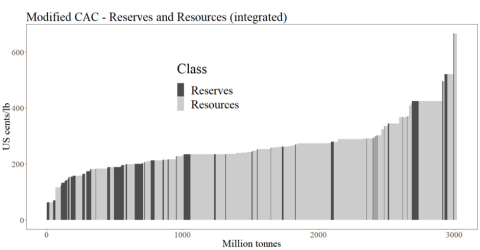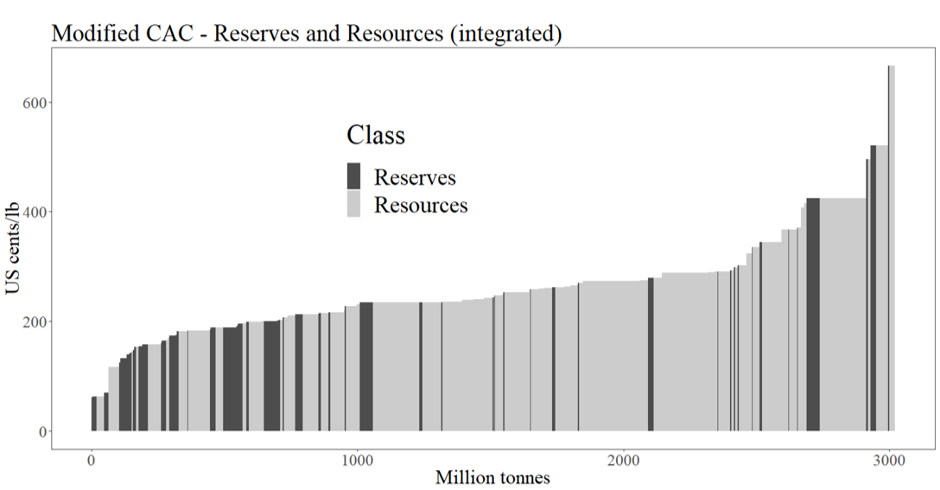
CMI researchers at the Colorado School of Mines conducted the research that led to this highlight
Achievement
- Modified an existing methodology to assess the long-run availability of mineral resources, which reconciles differences between the two major schools of thought about resource availability.
- Applied the method to copper resources
Significance and Impact
- Demonstrates that differences between the two approaches can be reconciled
- Finds that, when applied to copper, peak production and use are pushed farther into the future than most recent assessments
Details
Peak models, based on physical stocks and flows, and cumulative-availability-curve approaches, based on opportunity costs, can be reconciled to develop improved assessments of long-run resource availability - by taking advantage of aspects common to both approaches and incorporating demand.

